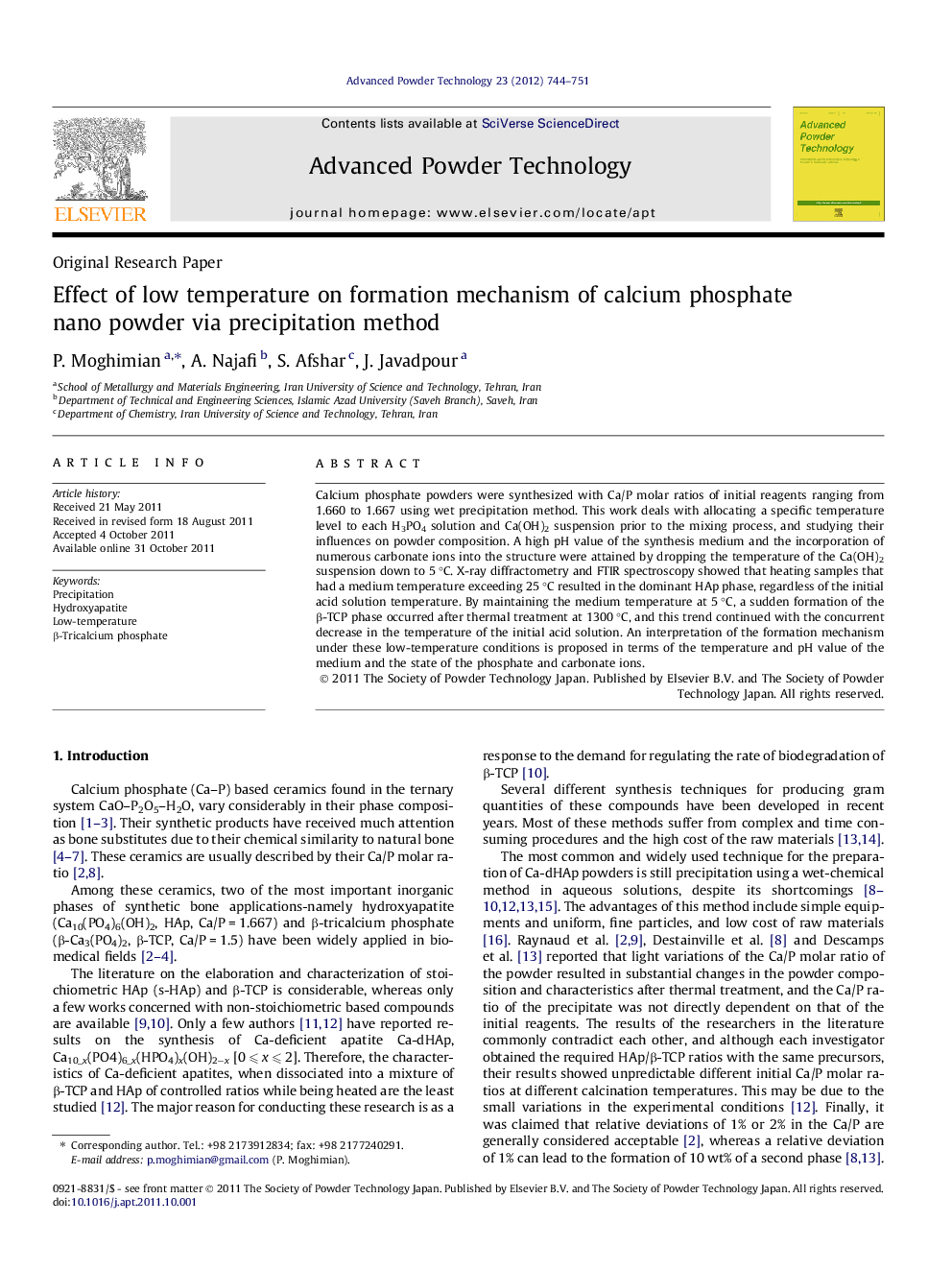| Article ID | Journal | Published Year | Pages | File Type |
|---|---|---|---|---|
| 144301 | Advanced Powder Technology | 2012 | 8 Pages |
Calcium phosphate powders were synthesized with Ca/P molar ratios of initial reagents ranging from 1.660 to 1.667 using wet precipitation method. This work deals with allocating a specific temperature level to each H3PO4 solution and Ca(OH)2 suspension prior to the mixing process, and studying their influences on powder composition. A high pH value of the synthesis medium and the incorporation of numerous carbonate ions into the structure were attained by dropping the temperature of the Ca(OH)2 suspension down to 5 °C. X-ray diffractometry and FTIR spectroscopy showed that heating samples that had a medium temperature exceeding 25 °C resulted in the dominant HAp phase, regardless of the initial acid solution temperature. By maintaining the medium temperature at 5 °C, a sudden formation of the β-TCP phase occurred after thermal treatment at 1300 °C, and this trend continued with the concurrent decrease in the temperature of the initial acid solution. An interpretation of the formation mechanism under these low-temperature conditions is proposed in terms of the temperature and pH value of the medium and the state of the phosphate and carbonate ions.
Graphical abstractFigure optionsDownload full-size imageDownload as PowerPoint slideHighlights► BCP (over 30 wt% β-TCP) can be prepared by lowering the temperature of initial media. ► Temperature of the acid solution affects the β-TCP/HAp at low media temperature. ► Phosphate ions play significant role in the β-TCP formation at low temperatures.
